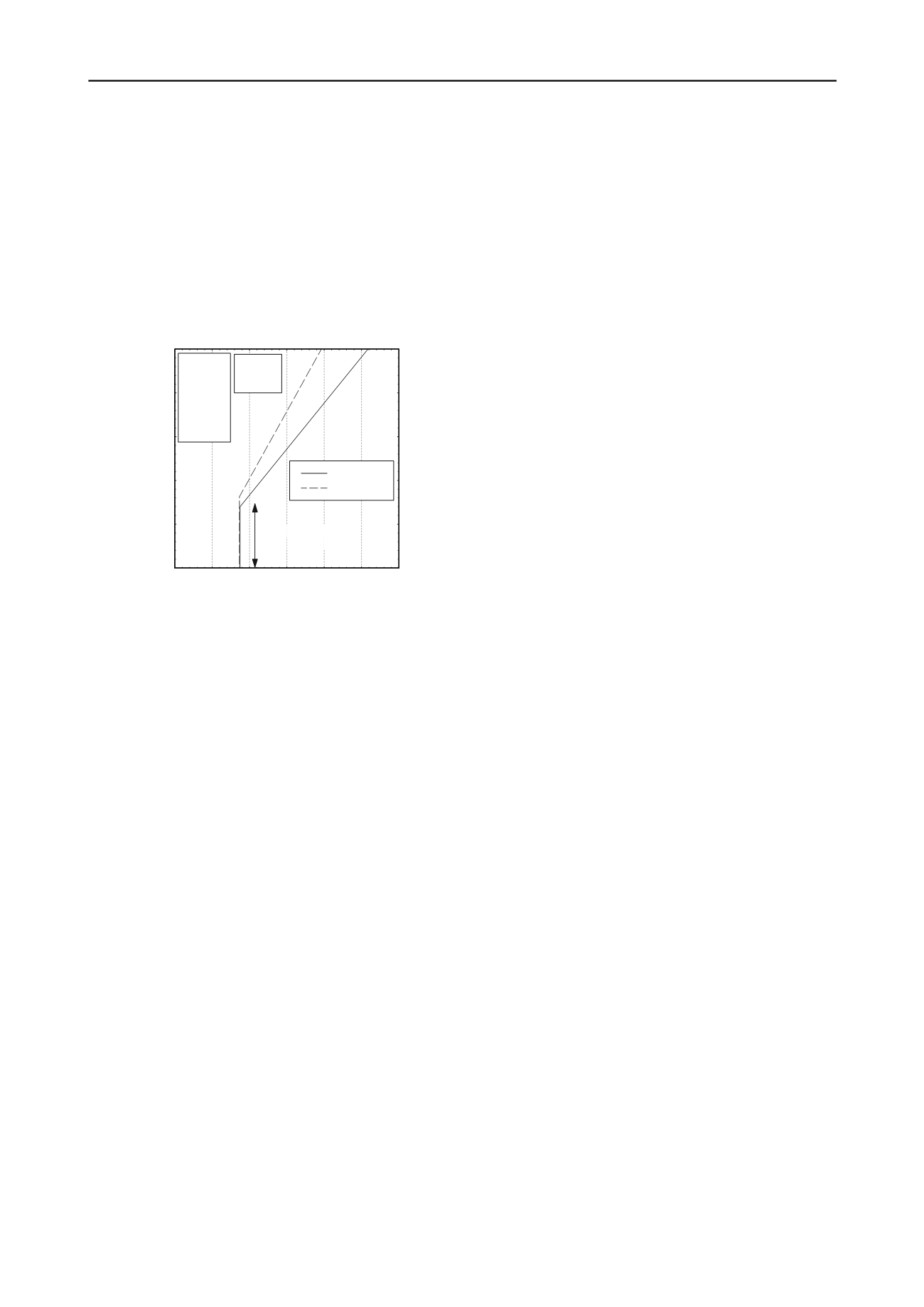
2448
Proceedings of the 18
th
International Conference on Soil Mechanics and Geotechnical Engineering, Paris 2013
the initial lateral stresses are lower. Then, the analysis focuses
on the length of the column that should be encased. Here, a
preliminary study of the encasement length is presented using
the authors' closed-form solution.
5 ACKNOWLEDGEMENTS
The closed-form solution provides the vertical strain of the
column at different depths. Figure 7 shows that those strains are
higher at shallow depths and linearly decrease with depth, as
initial horizontal stresses increase. If the column is encased,
those strains are lower but follow a similar pattern. Therefore,
encasing the columns is more effective in their upper part but
that varies linearly with depth and there is not a critical length
of the encasement that should specifically be used.
The work presented is part of a research project on "An
integrated calculation procedure for stone columns, considering
the influence of the method of installation", for the Spanish
Ministry of Science and Innovation (Ref.: BIA2009-13602).
6 REFERENCES
Balaam N.P. and Booker J.R. 1981. Analysis of Rigid Rafts supported
by Granular Piles.
International Journal for Numerical and
Analytical Methods in Geomechanics
5: 379-403.
Barron R.A. 1948. Consolidation of fine-grained soils by drain wells.
Transactions ASCE
113: 718–742.
0
1
2
3
4
5
0
1
2
3
4
5
6
J
g
/(
r
c
E
s
)=0
J
g
/(
r
c
E
s
)=2
Elastic column
(high depths)
'
s
=
'
c
K
0s
=0.6
E
c
/
E
s
=40
c
=
s
=0.3
a
r
=0.11
c
=40º
c
=10º
Vertical strain,
z
(%)
Depth factor,
z
'
s
/ p
a
Brinkgreve R.B.J. 2007.
Plaxis finite element code for soil and rock
analysis
, 2D, version 8. Rotterdam: Balkema.
Castro J. and Karstunen M. 2010. Numerical simulations of stone
column installation.
Canadian Geotechnical Journal
47(10): 1127-
1138.
Castro J. and Sagaseta C. 2008. Influence of stone column deformation
on surrounding soil consolidation. In M. Karstunen and M. Leoni
(ed.),
Proc. of the 2nd International Workshop on Geotechnics of
Soft Soils, Glasgow
, pp. 333-338. Leiden: Balkema.
Castro J. and Sagaseta C. 2009. Consolidation around stone columns.
Influence of column deformation.
International Journal for
Numerical and Analytical Methods in Geomechanics
33: 851-877.
Castro J. and Sagaseta C. 2011. Deformation and consolidation around
encased stone columns.
Geotextiles and Geomembranes
29, 268-
276.
Gniel J. and Bouazza A. 2009. Improvement of soft soils using geogrid
encased stone columns.
Geotextiles and Geomembranes
27: 167–
175.
Guetif, Z., Bouassida, M. and Debats, J.M. 2007. Improved soft clay
characteristics due to stone column installation.
Computers and
Geotechnics
34(2): 104-111.
Figure 7. Vertical strain at different depths.
4 CONCLUSIONS
The main features of a closed-form solution, recently developed
by the authors (Castro and Sagaseta 2011), to study soft soil
improvement, both reduction of settlement and consolidation
time, by means of encased stone columns are presented. The
analytical solution pretends to be a simple and useful tool for
design. Therefore, only a unit cell, i.e. an end-bearing column
and its surrounding soil, is modelled in axial symmetry under a
rigid and constant load.
Kempfert H.-G. 2003. Ground improvement methods with special
emphasis on column-type techniques. In:
Proceedings of the
International Workshop on Geotechnics of Soft Soils-Theory and
Practice
,
SCMEP, Noordwijkerhout, Netherlands
, pp. 101-112.
Khabbazian M., Kaliakin V.N. and Meehan C.L. 2010. Numerical study
of the effect of geosynthetic encasement on the behaviour of
granular columns.
Geosynthetics International
17: 132–143.
Lo S.R., Zhang R. and Mak J. 2010. Geosynthetic-encased stone
columns in soft clay: A numerical study.
Geotextiles and
Geomembranes
28: 292–302.
Parametric studies of the settlement reduction and stress
concentration show the efficiency of encasing the columns,
which is mainly ruled by the encasement stiffness compared to
that of the soil. Therefore, encasing stone columns is
recommended in very soft soils and the encasement should be
stiff enough. Besides, the settlement reduction decreases with
the applied load. Column encasement is equally useful for
common area replacement ratios but columns of smaller
diameters are better confined.
Malarvizhi S.N. and Ilamparuthi K. 2007. Comparative study on the
behaviour of encased stone column and conventional stone column.
Soils and Foundations
47: 873–885.
Murugesan S. and Rajagopal K. 2006. Geosynthetic-encased stone
columns: Numerical evaluation.
Geotextiles and Geomembranes
24: 349–358.
Murugesan S. and Rajagopal K. 2010. Studies on the Behavior of Single
and Group of Geosynthetic Encased Stone Columns.
Journal of
Geotechnical and Geoenvironmental Engineering
136: 129-139.
The results of the closed-form solution agree well with
numerical analyses. The only assumption of the solution that
has a slightly noticeable effect in the results is neglecting the
elastic strains in the column during its plastic deformation.
Therefore, including those elastic strains is an improvement of
the presented solution under development.
Pulko B. and Majes B. 2005. Simple and accurate prediction of
settlements of stone column reinforced soil. In:
Proceedings of the
16
th
International Conference on Soil Mechanics and Geotechnical
Engineering, Osaka, Japan,
vol. 3, pp. 1401-1404.
Raithel M. and Kempfert H.G. 2000. Calculation models for dam
foundations with geotextile coated sand columns. In:
Proceedings
of the International Conference on Geotechnical & Geological
Engineering, GeoEngg—2000, Melbourne.
Finally, a preliminary analysis of the encasement length
shows that is more efficient to encase the columns in the upper
part, as expected, but there is not a critical length of the
encasement that should specifically be used.
Sharma S.R., Phanikumar B.R. and Nagendra, G. 2004. Compressive
load response of granular piles reinforced with geogrids.
Canadian
Geotechnical Journal
41: 187–192.
Smith M. and Filz G. 2007. Axisymmetric numerical modeling of a unit
cell in geosynthetic-reinforced, column-supported embankments.
Geosynthetics International
14: 13–22.
Wehr J. 2006. The undrained cohesion of the soil as criterion for the
column installation with a depth vibrator. In:
Proceedings of the
International Symposium on vibratory pile driving and deep soil
vibratory compaction, TRANSVIB 2006, Paris.


